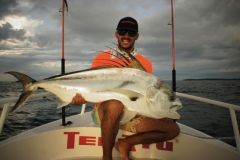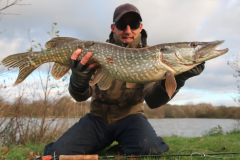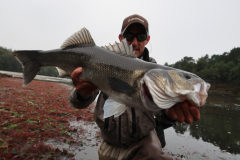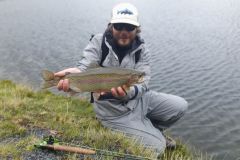The crystal-clear turquoise waters of Los Roques offer an extraordinary playground for fly fishermen. The landscapes are varied and of rare beauty. The diversity of environments is home to a wide range of species. Flats, beaches, coral reefs, lagoons and mangroves are home to a unique and exceptional variety of fish.
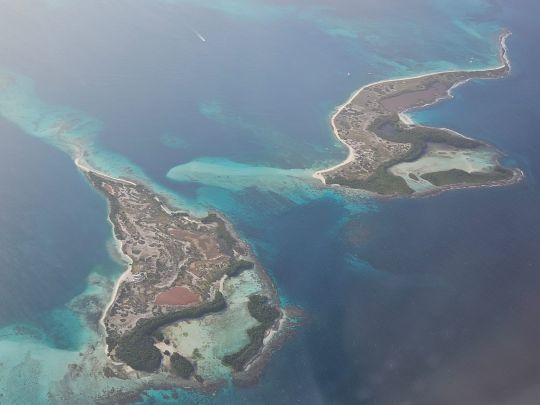
A unique archipelago!
Located 35 minutes by plane north of Caracas (128 km), the archipelago covers 221,120 hectares and comprises 350 islands and islets. This makes it the largest marine park in the Caribbean Sea. More than 280 species of fish, 200 species of crustaceans, 140 species of molluscs and 61 species of coral have been recorded, as well as local and migratory birds (92 species), dolphins, whales, manta rays and sea turtles, 4 of which are protected worldwide.
On August 9, 1972, the archipelago was classified as a National Park, in order to preserve this unique place for its marine diversity (flora and fauna) and its wide variety of seabirds. As a result of this classification, activities are now controlled and regulated. Fishing is preserved and therefore excellent all year round.
From the 1980s onwards, the first fishermen appeared to discover an unusual place that would soon become one of the best multi-species destinations in the Caribbean.
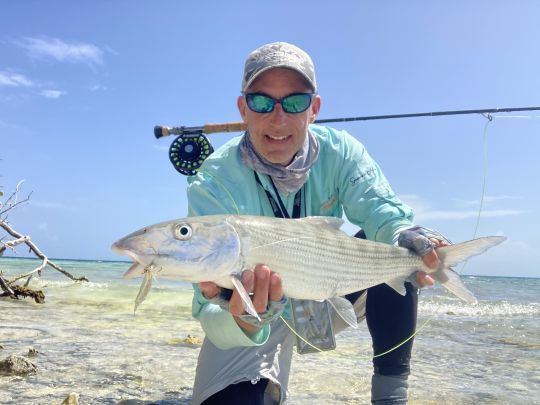
Bonefish, the flagship species
At Los Roques, the entire food chain is based on the abundant "carnada" or forage fish, made up of all kinds of small fish or "sardinas".
Bonefish, tarpon and jacks of all kinds feed mainly on these prey.
Bonefish here are very often caught with small fish imitations, using minnow clousers and gummies. Indeed, this is a local specialty, as bonefish generally feed on crabs and shrimps in most of the world's destinations. Here, they are even more powerful and aggressive, seeking their prey on the edges of flats, beaches and lagoons.
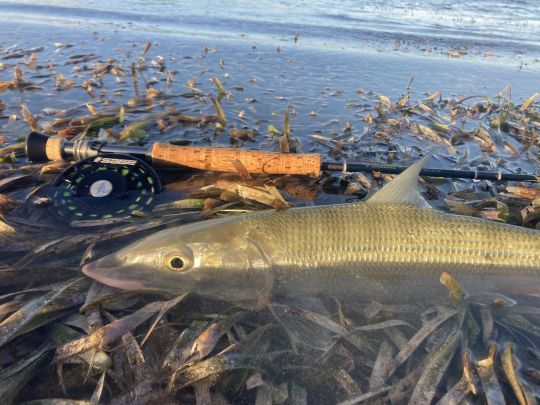
Bonefish are sought on various islands and flats (shallow water). In fact, it's possible to fish wadding on your own on many islands by having a boat or shuttle drop you off.
Bonefish travel alone, in pairs or in small groups in search of different prey, but above all of that food manna: small fish.
Whether on beaches, in lagoons or along the edges of flats, bonefish come along the edge to strike forage fish like aggressive predators such as trevally or golden dorado (freshwater).
As a result, we use a lot of fish imitation to trigger their aggression and adapt to their diet. The actions are violent, as bonefish are one of the fastest fish in warm water. Once they've been bitten, they dart out to sea, trying to unhook themselves or break you in the coral, which is never far away on the archipelago.
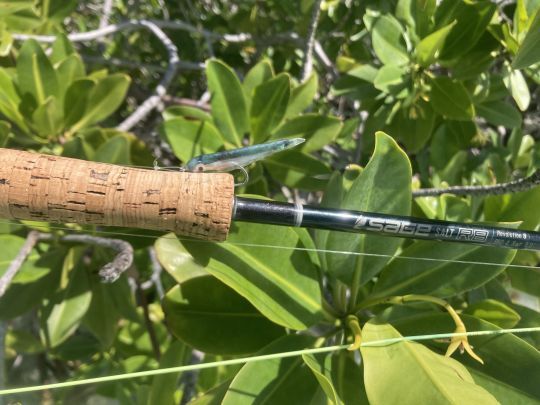
Of course, bonefish also come into little water to feed on crabs, shrimps, molluscs and marine worms, especially on sandy-silty bottoms and turtle grass. It's not uncommon to find bonefish foraging on the bottom, tail and body part out of the water, known as tailing.
This is a much more technical and delicate type of fishing. In this case, you need to be precise and delicate to land close to feeding fish.
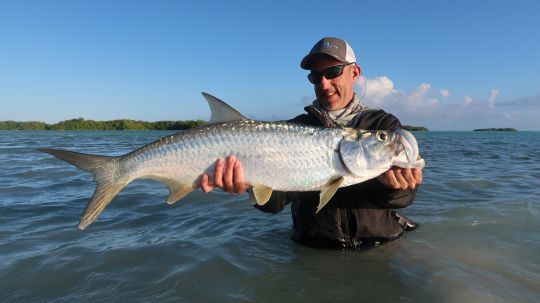
A wide variety of species
With the help of a local guide, you'll be able to find bonefish in a variety of spots that you won't be able to reach without their knowledge of the area and the tides, as well as a wide range of species including tarpon, different varieties of trevally, permit, parrotfish, triggerfish, barracuda and snook, among others. Los Roques is a unique destination also for its countless possibilities!
On the same day, depending on conditions and tides, you can try out different species that are rarely found at the same destination.
Depending on your mood, you can also try your hand at ticking off a new species, or try your hand at catching a rare fish: the parrot fish in this case, the rainbow parrot fish.
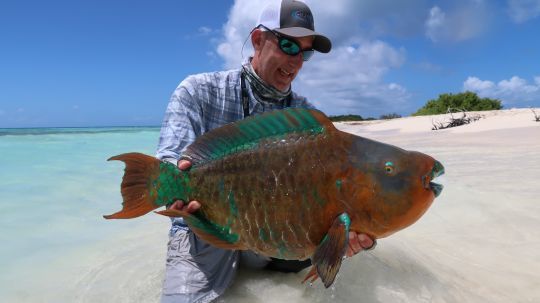
Opportunities for permit are regular. The triggerfish are always active on the barrier reef. Tarpons often behind the sardinas, whether on the flats or in the lagoons and mangrove bangs, and snook also on the prowl in this type of environment.
As you can see, Los Roques is a unique destination where you can indulge your passion for bonefish, which can be found on all the islands, but also vary the pleasures. The silk often flies through the rings and you'll often see the backing coming out of your reel, all in a breathtaking setting!

 /
/ 


